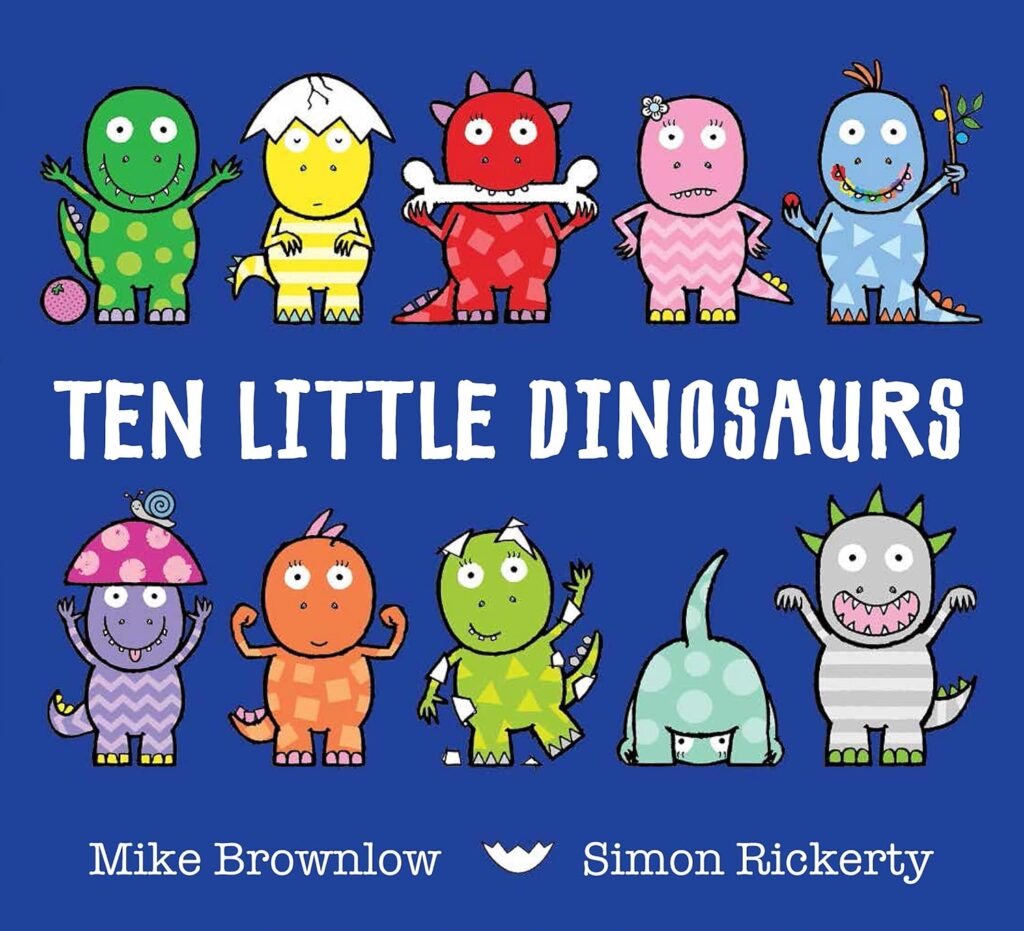A Step 1 Step into Reading Math Reader offers a hilarious and unique approach to addition and subtraction, courtesy of the Berenstains. The gradually increasing number of bears on wheels–unicycles, bikes, and trikes–engage in silly antics that will make beginning readers giggle as they learn beginning math skills. Step 1 Readers feature big type and easy words. Rhymes and rhythmic text paired with picture clues help children decode the story. For children who know the alphabet and are eager to begin reading.

Bears on Wheels
(9780385391368)
Written & illustrated by Jan Berenstain and Stan Berenstain
Published by Random House Books for Young Readers
Theme/topic: Mathematics
This lively and engaging story introduces young readers to basic counting from 1 to 10 (ACMNA001, AC9MFN01 – Foundation Year, Mathematics). The simple yet entertaining narrative follows bears as they ride on wheels in various configurations, showcasing relationships between numbers and objects (ACMNA002 – Foundation Year, Mathematics). Through its use of repetitive patterns and clear visual representations, the book helps children practise subitising small collections (ACMNA003 – Foundation Year, Mathematics). With its playful illustrations and rhythmic text, Bears on Wheels is an excellent resource for building early numeracy skills in an enjoyable and interactive way.
Curriculum Alignment:
- These AC codes are suggested purely based on the book’s content and are provided for reference only.
AC9MFN01 9.0 (Mathematics Foundation): Name, represent and order numbers including zero to at least 20, using physical and virtual materials and numerals
• responding to a request to collect a quantity of objects or reading a numeral and selecting the associated quantity of items from a collection to match the number required; for example, collecting 9 paint brushes after hearing the word ‘nine’
• recognising the order in the sequence of numbers to (20) and identifying the number that is “one less” than a given number and the number that is “one more”; for example, playing instructive card games that involve reading and ordering number cards; using counting songs, story books and rhymes to establish the forwards and backwards counting sequence of numbers in the context of active counting activities
• understanding and using terms such as “first”, “second”, “third”, … “fifth”… to indicate ordinal position in a sequence; for example, creating a number track using cards with the numerals zero to (20) and describing positions using terms such as first, last, before, after, between
• recognising, writing and reading numerals written on familiar objects; for example, in images, text or illustrations in story books; writing a numeral on a container as a label to show how many objects it contains
• connecting quantities to number names and numerals when reading and reciting stories and playing counting games or determining and reasoning about the size of sets of objects within First Nation Australians’ instructive games; for example, Segur etug from Mer Island in the Torres Strait region
ACMNA001 8.4 (Mathematics Foundation): Establish understanding of the language and processes of counting by naming numbers in sequences, initially to and from 20, moving from any starting point
• reading stories from other cultures featuring counting in sequence to assist students to recognise ways of counting in local languages and across cultures
• identifying the number words in sequence, backwards and forwards, and reasoning with the number sequences, establishing the language on which subsequent counting experiences can be built
• developing fluency with forwards and backwards counting in meaningful contexts, including stories and rhymes
• understanding that numbers are said in a particular order and there are patterns in the way we say them
ACMNA002 8.4 (Mathematics Foundation): Connect number names, numerals and quantities, including zero, initially up to 10 and then beyond
• understanding that each object must be counted only once, that the arrangement of objects does not affect how many there are, and that the last number counted answers the ‘how many’ question
• using scenarios to help students recognise that other cultures count in a variety of ways, such as the Wotjoballum number systems
ACMNA003 8.4 (Mathematics Foundation): Subitise small collections of objects
• using subitising as the basis for ordering and comparing collections of numbers






